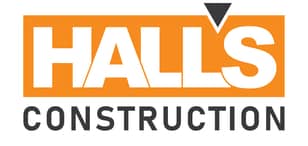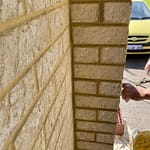When it comes to brickwork and keeping a home in good condition, weep holes play a much bigger role than most people realise. If you have ever noticed those small gaps left in between bricks near the base of your walls, those are weep holes. They may look like minor details, but they are actually essential for the health of your home.
Our team works with homeowners across Perth to repair brickwork and repointing, and one of the most common issues we come across involves poorly placed or blocked weep holes. This is a problem that can affect airflow, lead to dampness, and over time cause damage to the structure of your home.
What Exactly Are Weep Holes
A weep hole is a small, intentional gap left in the mortar joints of a brick wall. They are not a mistake or a sign of poor workmanship. Instead, they are carefully placed to allow air to circulate through the cavity of a wall and let any trapped moisture escape.
Without weep holes, water can build up inside the wall cavity and has nowhere to go. This leads to damp bricks, mould growth, and even the breakdown of mortar over time. In short, weep holes are a home’s way of breathing.
Why Weep Holes Are So Important
The main job of a weep hole is to protect your home from moisture damage. Bricks are naturally porous and will absorb water during heavy rain. The cavity between the external brick wall and the internal frame is designed to stop that moisture from reaching the inside of your home.
Weep holes provide ventilation, which keeps that cavity dry and prevents water from sitting where it shouldn’t. When they are working properly, you will rarely even notice them. But when they are blocked, missing, or placed incorrectly, the issues start to show.

The Common Problem With Perth Homes
In Perth, we see a very specific problem with weep holes. Most houses have weep holes that were installed below the height of the paving around the home. At first glance, this might not seem like a major issue, but it means that the weep holes are covered and cannot function properly.
When the paving sits higher than the weep holes, airflow through the cavity is blocked. This leaves the wall cavity damp, without the chance to ventilate and dry out. Over time, that trapped moisture causes brick deterioration, crumbling mortar, and even damage to the structural timber behind the brickwork.
It is one of those hidden issues that many homeowners do not notice until cracks or other problems start to appear in the brickwork.
How We Fix the Problem
The good news is that this issue can be fixed. Our team has extensive experience in brick repairs and repointing, and we regularly help homeowners by restoring proper ventilation through their weep holes.
The process involves carefully adjusting the brickwork or surrounding paving so that the weep holes are exposed and able to do their job. In some cases, we create new weep holes at the correct height to ensure proper airflow.
We always take the time to assess each property individually. No two homes are exactly the same, so the solution needs to be tailored to the type of brickwork, the paving, and the existing damage that may have already occurred.
The Benefits of Proper Weep Hole Ventilation
Once your weep holes are correctly placed and functioning as they should, you will notice the benefits almost immediately. The main improvement is in the ventilation of the wall cavity. This allows air to flow freely and any moisture that enters the wall to evaporate rather than becoming trapped.
Better ventilation means less chance of damp patches appearing on your internal walls. It also reduces the risk of efflorescence, which is that white, powdery substance that sometimes appears on bricks when salts are drawn out by moisture.
In the long run, functioning weep holes also extend the life of your brickwork. Bricks and mortar that stay dry last significantly longer than those exposed to constant dampness. For homeowners, this means fewer repairs, less maintenance, and peace of mind that the home is structurally sound.
What Happens if the Problem is Ignored
If weep holes remain blocked or covered, the impact can be more serious than many people expect. Damp walls create the perfect environment for mould and mildew. This not only damages the home but also affects the health of the people living in it.
Over time, excess moisture can also cause the mortar between the bricks to crumble. Cracked or weakened mortar makes the wall less stable and can eventually require extensive repairs. In severe cases, the internal framework of the home can even be affected.
By the time these signs show up, the damage is usually already advanced, which makes the repairs more costly. Addressing the issue early is always the smarter option.
Why Choose Halls Construction for Weep Holes
We specialise in brick repairs and repointing across Perth, and we understand the unique building conditions of Western Australian homes. From older brick houses to modern builds, we have seen firsthand how weep holes can make the difference between a wall that lasts for decades and one that needs constant attention.
Our approach is always practical and straightforward. We explain the problem clearly, show you the options, and carry out the work with attention to detail. We know that homeowners want lasting solutions rather than quick fixes, which is why we focus on restoring the full function of your brickwork, not just patching up the symptoms.
Protecting the Future of Your Home
Weep holes may look like tiny details, but they play a huge role in the overall health of your home. Making sure they are clear, correctly positioned, and able to do their job is one of the simplest ways to protect your brickwork from unnecessary damage.
If you are unsure about the condition of your weep holes, or if you suspect that your paving has blocked them off, it is worth having an inspection done sooner rather than later.
With the right care, your brickwork can remain strong, your walls can stay dry, and your home can keep standing proud for many years to come.


